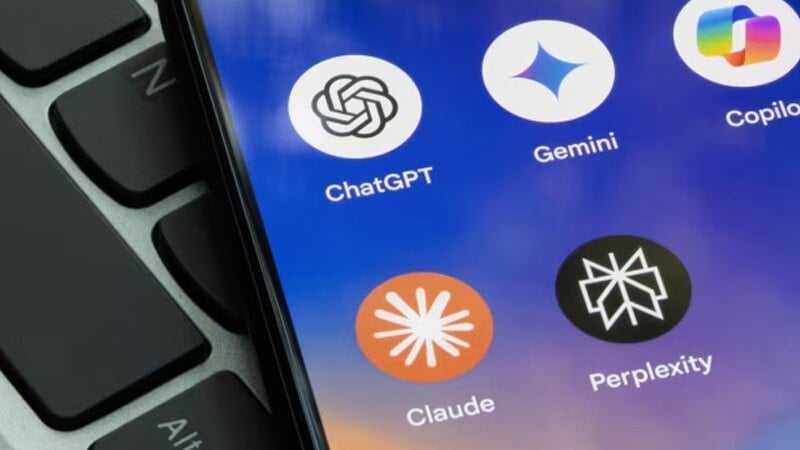AI virtual assistants are rapidly transforming the way we manage daily tasks and workflows. Whether you're a business owner, working professional, or tech-savvy individual, learning how to use AI assistants effectively can save time, reduce errors, and boost productivity. In this guide, you'll discover practical strategies to get the most out of your AI assistant.

I. What Is an AI Virtual Assistant?
An AI virtual assistant is a software-based helper powered by artificial intelligence. It can execute tasks such as scheduling, emailing, data processing, and answering queries—all using natural language commands.
Unlike human assistants, AI assistants are:
Available 24/7
Instantly responsive
Integrated with various apps and systems
Common Types:
Voice-based: Google Assistant, Amazon Alexa, Apple Siri
Chat-based: ChatGPT, Microsoft Copilot
Integrated tools: Notion AI, Grammarly AI, Slack AI Bots
These tools are becoming critical across industries—not just as helpers, but as digital coworkers.
II. Core Benefits of Using an AI Virtual Assistant
| Benefit | How It Helps |
|---|---|
| Task Automation | Automates repetitive tasks like meeting reminders, reports, and email replies |
| 24/7 Availability | Works anytime, improving response time and operational flow |
| Cost Savings | Reduces reliance on full-time admin staff |
| Highly Scalable | Integrates across CRMs, project management, and internal platforms |
| Data Handling | Processes, stores, and summarizes large amounts of data |
AI assistants enhance both efficiency and decision-making—for individuals and businesses alike.
III. Best Use Cases by Industry
A. For Business Professionals
Schedule meetings, draft emails, and send follow-ups
Take notes during calls and generate action items
Update client data directly into CRM systems
B. For Entrepreneurs and SMEs
Automate website chat replies
Manage invoices, track finances
Schedule and post content on social media
C. For Enterprises
Automate HR onboarding and documentation
Help desks powered by internal knowledge bases
Generate sales proposals and pipeline insights
D. For Personal Use
Manage tasks, reminders, and to-do lists
Organize shopping, travel, or fitness schedules
Integrate with smart home controls (lights, appliances)
IV. How to Set Up and Integrate an AI Virtual Assistant
1. Choose the Right Platform
Business: Microsoft Copilot, Notion AI
Everyday use: Google Assistant, ChatGPT
Customer service: Tidio, Drift, Intercom AI
2. Set Permissions and Access Rules
Grant access to calendar, email, files, or CRM
Control user roles and admin privileges
3. Connect Daily Tools
Sync with Slack, Zoom, Trello, Gmail, Outlook
Use APIs or third-party platforms like Zapier for custom flows
4. Create Triggers and Workflows
Set commands like “summarize meeting” or “send weekly report”
Automate recurring tasks: content posting, invoice reminders
5. Train and Optimize Continuously
Feed it with custom terminology and processes
Adjust based on results and employee feedback
V. Tips for Using AI Assistants Effectively
Be Clear and Concise: Specific prompts yield better responses
Use Templates: Build prompt libraries for recurring needs (emails, updates, reports)
Pair with Automation Tools: Zapier, Make, or IFTTT can extend functionality
Review Outputs: Always check AI-generated content before sharing externally
Prioritize Security: Encrypt data, manage user access, and follow compliance rules (GDPR, HIPAA)
VI. Choosing the Right AI Virtual Assistant Software
| Software | Core Features | Best For |
|---|---|---|
| ChatGPT / GPTs | Conversational AI, plugin & web-browsing support | General users & freelancers |
| Microsoft Copilot | Office 365 integration (Word, Excel, Teams) | Professionals & corporate teams |
| Google Assistant | Voice control, Android integration | Personal use, mobile productivity |
| Tidio / Drift | AI chatbots with CRM links | E-commerce & customer support |
| Replika / My AI | Conversational wellness companions | Personal growth, lifestyle users |
| Notion AI | Embedded smart writing & task planning | Managers, creators, remote teams |
VII. Common Pitfalls to Avoid
Over-Reliance Without Oversight
Use AI for support—not to replace human judgmentIgnoring Security Settings
Misconfigured permissions can expose sensitive dataLack of Team Training
Without onboarding, tools may be misused or underutilizedUnrealistic Expectations
AI is powerful, but only as good as the instructions it's given
VIII. The Future of AI Virtual Assistants
AI assistants are evolving from reactive to proactive collaborators. Soon they’ll do more than respond—they’ll anticipate your needs.
What’s Coming Next?
Predictive Suggestions: Recommend actions before you ask
Multimodal Input: Understand text, images, voice, and video
Emotional Recognition: Respond based on mood or sentiment
Metaverse Integration: Operate as 3D avatars in digital spaces
Custom AI Agents: Train your assistant to match your business or personality
IX. Frequently Asked Questions (FAQ)
Q1: Can AI assistants replace human assistants completely?
Not fully. They excel at repetitive tasks but lack human judgment in complex situations.
Q2: What industries benefit most from AI virtual assistants?
Tech, retail, healthcare, education, real estate, and customer service see the highest gains—but most industries can benefit.
Q3: Are AI virtual assistants secure to use?
Yes—if configured correctly. Look for encryption, role-based access, and GDPR compliance.
Q4: Are AI assistants affordable for individuals?
Definitely. Most platforms offer free or low-cost tiers with plenty of functionality.
Q5: Can AI assistants work offline?
Some smart devices offer limited offline voice commands, but most features require an internet connection.
Conclusion: AI Assistants as Smart Productivity Partners
AI virtual assistants aren’t just productivity boosters—they’re digital co-workers transforming how we work and live. Used effectively, they reduce stress, streamline tasks, and create more space for strategic and creative thinking.
From freelancers to enterprise teams, integrating an AI-powered assistant can unlock measurable productivity gains. Choose the right tool, set it up wisely, and allow it to handle the repetitive load so you can focus on high-value work.
The future of digital productivity is here—and it's conversational, contextual, and continuously learning.
 Unsold Electric Cars For Seniors Now Almost Given Away: View Prices
Unsold Electric Cars For Seniors Now Almost Given Away: View Prices Looking For Free Dental Implants? Check Out These Top Programs For Seniors
Looking For Free Dental Implants? Check Out These Top Programs For Seniors Discover Affordable Senior Apartments Near You
Discover Affordable Senior Apartments Near You Empower Yourself With These HIV Treatment Choices
Empower Yourself With These HIV Treatment Choices Do You Know These Signs of Atopic Dermatitis
Do You Know These Signs of Atopic Dermatitis How to Choose Reliable Dating Apps for Meaningful Connections
How to Choose Reliable Dating Apps for Meaningful Connections










